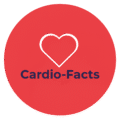Signs of heart attack in women can be very different from those in men. While chest pain is often considered the main warning sign, women may experience subtler, less typical symptoms. These differences make it harder to recognize a heart attack in time, which can lead to dangerous delays in treatment. Knowing the warning signs could save your life or the life of someone you love.
Classic Symptoms of a Heart Attack
Some women do experience the “classic” symptoms that most people associate with a heart attack, such as:
- Chest pain or pressure (often described as squeezing or burning)
- Pain radiating to the left arm, jaw, or neck
- Shortness of breath
However, research shows that many women have different warning signs, which are easy to dismiss or confuse with other health problems.
Common Signs of Heart Attack in Women
Women are more likely to present with:
- Unusual fatigue, sometimes lasting days before the event
- Nausea, vomiting, or indigestion-like discomfort
- Dizziness or lightheadedness
- Cold sweats
- Back or shoulder pain, especially between the shoulder blades
Because these symptoms can mimic stress, flu, or stomach issues, many women delay calling for help — with potentially fatal consequences.
Can Heart Attack Symptoms in Women Be Silent?
Some women may experience very mild or even no symptoms at all. This is sometimes called a silent heart attack. It is more common in women with diabetes or older age. Even without chest pain, unexplained fatigue, shortness of breath, or persistent indigestion-like discomfort should never be ignored. Paying attention to these subtle changes is crucial for early diagnosis and timely treatment.
Why Are Symptoms Different in Women?
Several factors may explain the differences:
- Hormonal influences (such as after menopause)
- Smaller coronary artery size in women
- Plaque buildup that often occurs differently than in men
These factors can contribute to more subtle symptoms and a higher risk of misdiagnosis.
Risk Factors to Know
The risk of heart attack increases with certain conditions:
- High blood pressure
- High cholesterol
- Diabetes
- Smoking
- Obesity and lack of physical activity
- Menopause and hormonal changes
- Family history of early heart disease
When to Seek Help
If you experience chest pain, shortness of breath, or any of the above symptoms, call emergency services immediately. Do not wait to see if symptoms pass. Quick action is vital to minimize damage to the heart muscle.
How to Lower Your Risk
- Follow a heart-healthy diet rich in vegetables, fruits, whole grains, and lean protein
- Exercise regularly (150 minutes of moderate activity per week)
- Quit smoking and limit alcohol
- Manage stress and prioritize quality sleep
- Get regular checkups for blood pressure, cholesterol, and blood sugar
💡 See also
Exercise for Heart Health: How Much Do You Really Need?
Smoking and Heart Disease: The Hidden Dangers You Shouldn’t Ignore
Key Takeaway
Recognizing the signs of heart attack in women is essential for saving lives. Symptoms are not always obvious and can differ from men’s. If something feels wrong, trust your instincts and seek medical help immediately.
✅ FAQ
Q1: What are the first signs of a heart attack in women?
Often fatigue, nausea, shortness of breath, or back/jaw pain — not always chest pain.
Q2: How do female heart attack symptoms differ from men’s?
Women more often experience subtle symptoms like indigestion, sweating, or extreme tiredness.
Q3: Can stress trigger a heart attack in women?
Yes. Chronic stress and anxiety can increase cardiovascular risk in women.
Q4: What should I do if I think I’m having a heart attack?
Call emergency services immediately — don’t try to “wait it out.”
References
- ACC/AHA/ACEP/NAEMSP/SCAI 2025 Guideline for the Management of Acute Coronary Syndromes
- AHA/ACC 2021 Guideline for the Evaluation and Diagnosis of Chest Pain
- ACC — Ten Points to Remember: 2021 Chest Pain Guideline
- ESC 2023 Guidelines for the Management of Acute Coronary Syndromes
- ESC Cardiopractice — Acute Coronary Syndrome in Women
- CDC — About Heart Attack: Signs & Symptoms
- CDC — Women and Heart Disease
- NHLBI — Heart Attack Symptoms in Women
- American Heart Association — Heart Attack Symptoms in Women
- U.S. Office on Women’s Health — Heart Attack and Women
⚠️ Disclaimer: The content on Cardio-Facts is for informational and educational purposes only and does not constitute medical advice. Always consult a qualified healthcare professional regarding your health. Read our full disclaimer and legal policies.
